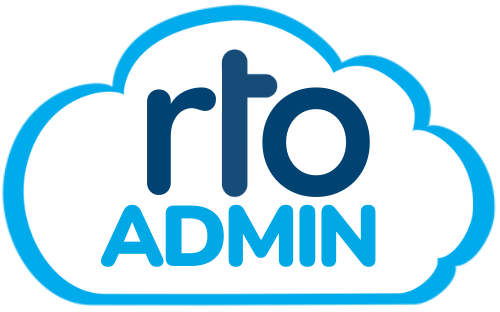Have you ever considered what it takes to develop a comprehensive business plan that leads to success in establishing a Registered Training Organisation (RTO)? Setting up an RTO isn’t just about having a passion for education; it’s a complex process that involves careful planning, adherence to stringent regulations, and strategic financial management. Here, we’ll take you through the essential components of creating a robust business plan aimed at achieving RTO registration success.

Understanding the Journey of RTO Registration
Establishing an RTO is an ambitious endeavor that comes with its own set of challenges. To transform from a concept to an operational RTO, you need to navigate through a structured registration process. Let’s break down the core elements involved in this journey.
The Steps to RTO Registration
The registration process forms the foundation of your RTO’s establishment. It includes preparing an array of documentation, lodging submissions, paying necessary fees, and undergoing audits conducted by the Australian Skills Quality Authority (ASQA). Successfully completing this process grants you an initial registration valid for two years, albeit with certain restrictions. Here’s a closer look at each step:
- Documentation Preparation: You’ll need to prepare detailed documentation outlining your business plan, policies, procedures, and your approach to training and assessment.
- Lodgement Fee: An application fee is required to process your submission. This is a mandatory step that must be completed to proceed further.
- Desktop Audit and Validation: ASQA will review your submitted documents through a desktop audit, validating your compliance with the Standards for Registered Training Organisations (RTOs) 2015.
Achieving Initial Registration
Upon successful assessment of your application, you will be granted a two-year initial registration. During this period, you will be expected to prove your capacity to deliver quality education and training. Initial registration often comes with certain limitations, which could include restrictions on student numbers or types of qualifications offered. It is crucial to plan for these limitations within your business strategy.
Crafting a Solid Business Strategy
A successful RTO begins with a sound business strategy that aligns with your organizational goals and compliance requirements. This section outlines key considerations when developing a business plan tailored for your RTO.
Developing a Strategic Business Plan
Developing a strategic business plan involves outlining your vision, mission, and objectives. This roadmap helps align your team’s efforts toward achieving organizational goals. Some questions to consider include:
- What are the core values and mission of your RTO?
- What objectives do you hope to achieve over the next two, five, and ten years?
- How do you plan to differentiate your RTO from competitors?
Financial Viability and Sustainability
Financial viability is a critical factor in the success of your RTO. An assessment of financial sustainability involves forecasting revenue, expenses, and resource allocation. As you plan your financial strategy, consider the following:
- How will you handle initial setup costs and ongoing operational expenses?
- What are your revenue streams, and how will you ensure cash flow remains stable?
- Are there contingency plans in place for unexpected financial challenges?
Policies, Procedures, and Compliance
Your policies and procedures are the backbone of your operational framework. They must align with the Standards for RTOs 2015 and be tailored to your organization’s context. Ensure that:
- Your policies cover all aspects of operation including student management, complaints, and appeals.
- Procedures are clear, well-documented, and regularly reviewed for compliance.
- Compliance measures are in place to manage any changes in legislation or standards.
Investing in Essential Resources and Management Systems
Starting an RTO requires a significant investment in resources and management systems to support training delivery and student management. Planning these resources effectively is vital for your success.
Essential Costs and Budgeting
Initial investments in learning resources, management systems, and other operational necessities can be significant. Accurate budgeting ensures you allocate funds where they are most needed:
- Learning Materials: Costs for both off-the-shelf and custom training materials.
- Student and Learning Management Systems: Choose systems that integrate various functionalities, enhance student experience, and support your growth strategies.
Table: Typical Initial Investment Costs
| Item | Estimated Cost (AUD) |
|---|---|
| Off-the-shelf Training Materials | $10,000 – $30,000 |
| Student Management System | $15,000 – $50,000 |
| Legal and Company Registration Fees | $5,000 – $15,000 |
| Website Development | $3,000 – $10,000 |
| Consultancy Fees | $5,000 – $20,000 |
Implementing a Compliant Student Management System
Your student management system must not only comply with regulatory standards but also support administrative and educational processes. When selecting a system, consider:
- Integration capabilities with finance, CRM, and learning management systems.
- Scalability to accommodate future growth and increased enrolments.
- User-friendliness for staff and students to ensure efficient operations.
Setting Up for Long-Term Success: Regulations and Financial Implications
Establishing a successful RTO takes thorough planning, especially in understanding the regulatory landscape and financial implications. Diving into these areas will set you up for long-term success.
Navigating Regulatory Requirements
Beyond initial registration, staying abreast with evolving regulations and compliance standards is necessary to maintain your RTO’s operations. Key considerations include:
- Understanding Changes: Regularly review updates to the Standards for RTOs and adjust your operations accordingly.
- Continuous Improvement: Implement a culture of continuous improvement to exceed compliance expectations and enhance the quality of delivery.
Evaluating Financial Implications
The financial landscape of running an RTO can be as dynamic as the educational sector itself. Regular evaluations of your financial health ensure resilience to market changes:
- Scenario Planning: Implement financial models to predict and plan for various market scenarios.
- Cost Management: Regular audits and reviews of your expenses help in identifying potential areas for cost savings without compromising quality.
Conclusion: Preparing for a Successful RTO Journey
Preparing for a successful RTO journey involves comprehensive planning from drafting a strategic business plan to understanding the nuances of regulatory compliance. By focusing on financial viability and investing in the right resources, you equip your organization with the tools necessary to thrive. Remember, the foundation of success is built on thorough preparation, continuous learning, and adaptation to change. Engaging the right expertise and maintaining a proactive approach will position your RTO as a leader in the education sector.
If setting up a Registered Training Organisation is your goal, consider this article your guide to navigating the complexities involved. Through thoughtful planning and a strong commitment to quality, your RTO can become a benchmark of success in the education industry.



